The OGM Interactive Edition - Summer 2023 - Read Now!
View Past Issues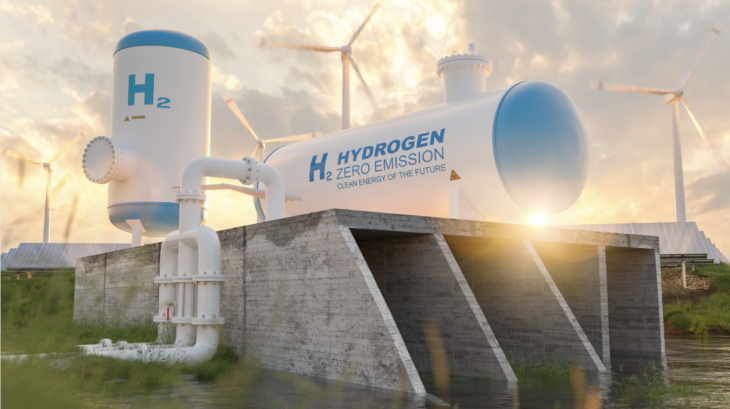
As a human species, we are generally resistant to change, which ultimately means we often end up in situations that force us to choose between life and death. Think smoking, addiction, and even energy addiction, which has resulted in climate change.
The only thing more powerful than keeping things status quo is the will to survive. That’s what climate change did. It woke people up to the fact that we are using and abusing our global resources at a rate that could kill us all.
Climate change is Mother Nature’s warning that we need to care for our planet right now. Wild storms are screaming at us, making us pay attention. Temperatures rise and fall at record rates ensuring we stop and listen. Wildfires blaze across towns and take people out of their homes. How can we look away? It’s been a rude awakening the world over.
We now understand that we must shift before the shift hits the fan.
I was born before the internet and cell phones. Just imagine that.
We have evolved from;
the steam engine to the internal combustion engine,
from coal to oil,
fax machines to email,
wifi to smartphones,
the 4th Industrial Revolution (4IR) where advances in artificial intelligence, robotics, the Internet of Things, genetic engineering, quantum computing the metaverse.
These are the natural-occurring, need-driven, evolutions of our times.
Right now, we are in the most expansive energy opportunity in history with the energy transition to a sustainable new energy future. The transition from fossil fuels to renewable energy is the smartest thing we can do with our current oil and gas resources. We need oil and gas to get us there, let’s not forget that.
Renewable energy is now; incentivized, affordable, and achievable. Consequently, many forms, applications, and processes of Hydrogen projects are emerging worldwide.
Yesterday, was the time to get involved in Hydrogen energy.
Hydrogen is the H in H2O. It is the most abundant chemical element in the universe. Hydrogen’s natural abundance is why it’s so exciting as an energy source. The Hydrogen market is here to stay, and by 2050 there is an expected $2.5 Trillion predicted for expected revenue.
Two key developments have contributed to the growth of hydrogen.
1. The cost of hydrogen supply from renewables has come down and continues to fall and become the mainstay of our energy economy.
2. The urgency of greenhouse gas emission mitigation has increased because of climate change.
On its own, Hydrogen is a gas that has no color, odor, or taste. Hydrogen is not poisonous, and it is super light, compared to most elements on earth. For example, Hydrogen is 15 times lighter than air.
The only problem with Hydrogen is that to use it, we have to detach it as a molecule and that, in and of itself, consumes a lot of energy. In other words, we need things like steam extraction and other processes to isolate the hydrogen molecule, which can be an in-depth, energy-intensive process.
Think of Hydrogen as you would think of electricity. It is an energy carrier rather than a fuel itself. Taking advantage of Hydrogen means detaching it as a molecule and combining it with other elements.
The most progressive innovators are implementing Hydrogen to fuel our future, literally and figuratively. When we burn Hydrogen the only emission we have to deal with is water, which makes it the most effective green energy source available.
Unlike oil and natural gas which do produce emissions, Hydrogen is the clean fuel of the future that can be produced in various ways, such as combining it with natural gas, nuclear power, biomass, solar, and wind. Each option has an emission consideration.
Hydrogen is a bit of an octopus with many arms of application and can be used to store, move and deliver energy produced from other sources. The greener the hydrogen the fewer emissions it produces. So the question beckons why don’t we work solely to develop green hydrogen and nothing else?
The answer to that question would be something like, why don’t we all use one computer or one cell phone for all people? The answer is simple. We have different needs, different adaptations, and different applications, which means we need a variety of cleaner, greener, energy sources that meet a rapidly growing global energy demand to serve the 8 Billion people on the planet.
Ensuring a low-carbon, clean hydrogen supply is essential to our future. Although there is no visible difference between the different colors of Hydrogen, colorful names are used to differentiate the many ways that hydrogen is produced. Not all Hydrogen is equal, in terms of emission reductions and overall climate change mitigation. The colors of Hydrogen allow us to identify the level of emissions each Hydrogen process emits.
1. Fossil fuel-based hydrogen production (Grey Hydrogen);
2. Fossil fuel-based hydrogen production combined with carbon capture
3. Utilisation and storage (CCUS; Blue Hydrogen)
4. Hydrogen from renewables (Green Hydrogen)
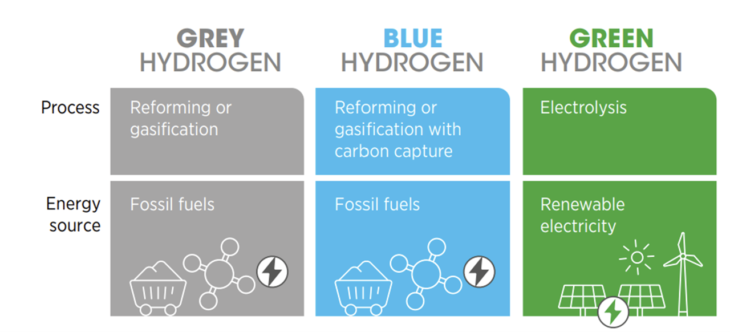
Grey Hydrogen is the most widely used and common form of hydrogen production to date. Grey Hydrogen is created from natural gas, or methane, using steam methane reformation. Grey Hydrogen is less popular than new hydrogen methods because it does not capture greenhouse gases made in the process. In other words, it is less environmentally friendly but it is considered a better source of energy than fossil fuels overall.
Blue hydrogen is much like Grey Hydrogen however it is supported by carbon capture and carbon storage. The CO2 generated during the manufacturing process of Hydrogen is then captured and stored permanently underground. The result is low-carbon hydrogen that produces no CO2. This is more environmentally friendly than Grey Hydrogen and Fossil Fuels.
Green Hydrogen is made exclusively from renewable sources and is the winner of all hydrogen options, as it is the most effective in reducing carbon emissions overall. Green Hydrogen, also called “clean hydrogen”, is produced using clean energy from surplus renewable energy sources, such as solar or wind power.
Renewable sources cannot always generate energy at all hours of the day, and green hydrogen production helps to use the excess generated energy during peak cycles. Green Hydrogen is the best way to harmonize and secure energy. Green Hydrogen allows us to store excess energy at times of low demand to be repurposed and fed back into the grid when demand rises. It does this while decarbonizing the chemical, industrial, and transportation sectors.
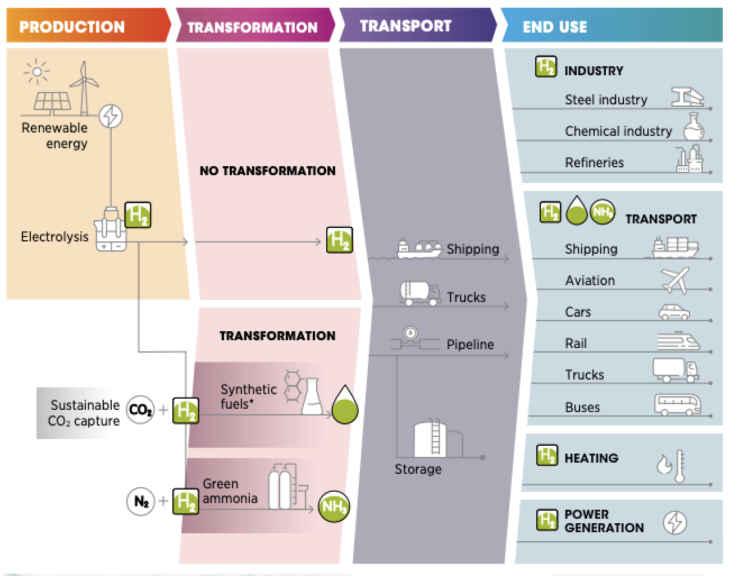
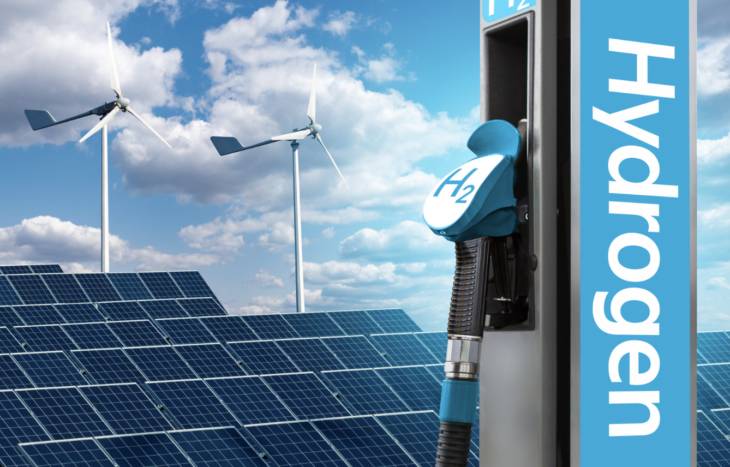
Global Hydrogen plays are emerging, and they are consciously working to combat climate change and develop emission-free energy sources. Countries around the world are adapting and integrating Hydrogen at record rates, mostly as a response to climate change and responsible governments. This new Hydrogen era leads to an unprecedented opportunity for business and sustainable new energy development. Where is your piece of the pie?
One of the most significant Hydrogen plays in the world is currently being developed by Mitsubishi Power Americas and Magnum Development. This Hydrogen project began construction on a 300 GWh underground storage facility in Utah, USA. The Hydrogen project will consist of two caverns with a capacity of 150 GWh, to store Hydrogen generated by an adjacent 840 MW hydrogen-capable gas turbine combined cycle power plant.
This mega-Hydrogen project is a massive step forward for Hydrogen and is a powerful example of what is possible in the Hydrogen world.
It’s time for Hydrogen.
See you there!

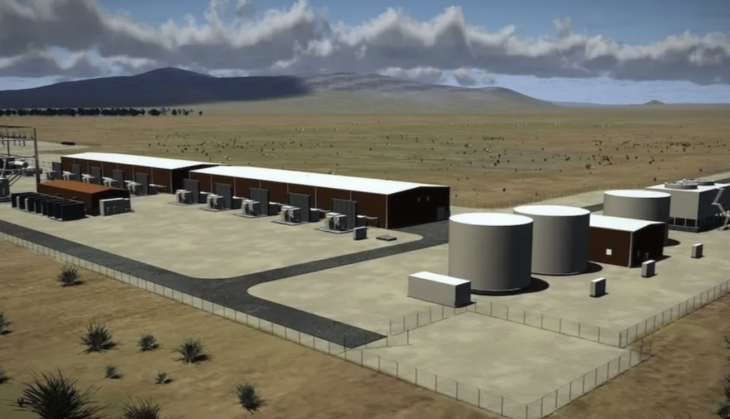
SOURCES & IMAGES – IRENA, Mitsubishi Heavy Industries, World Economic Forum
Did you enjoy this article?